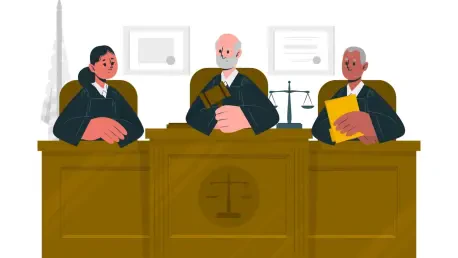Desiree Sainthrope is known for her keen understanding of the complexities surrounding trade agreements and global compliance in the legal realm. Recently, with the U.S. Supreme Court’s decision to reinstate a controversial ban, her knowledge becomes invaluable in navigating the legal intricacies of policies affecting the military and gender identity. Today, she offers insight into the repercussions of the court’s decision and its broader implications.
Can you provide an overview of the U.S. Supreme Court’s decision to reinstate President Trump’s ban on transgender military service members?
The Supreme Court’s decision to reinstate the ban essentially pauses the lower court’s ruling, allowing the administration to enforce a policy excluding transgender individuals from military service. This decision doesn’t conclude the legal battles but temporarily supports the ban until further appeals are heard. It’s a significant move, highlighting the court’s current approach to military policy matters as they concern gender identity.
How did the Supreme Court’s decision impact the lower court’s order blocking the ban?
By reinstating the ban, the Supreme Court interrupted the lower court’s order that previously blocked it. This effectively means the current administration can proceed with policies dismissing transgender individuals from military posts until the appeals court reviews this directive’s legality. Such an interruption often reflects the broader implications of court hierarchy and judicial deference to presidential authority in specific domains like defense.
What was the Trump administration’s main argument for reinstating the ban? Could you explain how they believed the district judge “improperly second-guessed” the Pentagon?
The administration contended that the district judge overstepped by questioning Pentagon decisions meant to maintain military readiness and effectiveness. They argued that the judge’s opposition lacked sufficient deference to military expertise and administrative judgment, which traditionally enjoys latitude under judicial scrutiny. Their premise was that policy changes were crucial for operational integrity, irrespective of social or political debates surrounding gender identity.
What are the next steps in the legal process regarding this case? Which appeals court will weigh in on this matter?
The next phase involves appellate review where a U.S. appeals court will decide whether to uphold or obstruct the executive directive. Focus will be on legal arguments about whether the ban violates constitutional rights or fails to meet administrative protocols. Decisions may take months, possibly returning the issue to the Supreme Court. Such cycles typify complex policy litigation spanning multiple judicial layers, each weighing constitutional claims against governance prerogatives.
How does this decision affect transgender service members currently serving in the military? What is the estimated number of service members who might be affected?
The ruling introduces uncertainty for thousands of transgender individuals actively serving, potentially leading to premature discharge or altered enlistment criteria. It’s estimated that thousands could be affected, disrupting their careers and impacting military diversity. These implications are profound, often raising questions on human rights and equitable treatment within military settings known for traditional stances on personal identity.
Could you discuss the potential implications this decision might have on future military policies?
The decision may set a precedent for future military policies concerning identity and inclusion, amplifying debates at administrative and legislative levels. It exemplifies how military directives might intertwine with broader societal issues, influencing policy beyond immediate personnel management. Innovations in policy could emerge, reflecting shifts in defense strategies and societal inclusivity values.
What are the key arguments from those opposing the ban? Has there been any significant public or political response to this decision?
Opponents argue that the ban discriminates on the basis of gender identity, undermining principles of equality enshrined in federal law. Public and political backlash often surrounds such directives, with advocacy groups mobilizing to challenge discrimination and voice support for affected service members. Political debates become vibrant, reflecting ongoing tensions between inclusive practices and traditional policy formulations.
How might this case set a precedent for other cases involving gender identity and military service?
This case could significantly shape judicial perspectives on gender identity within federal policy contexts, reinforcing the need for rigorous constitutional evaluations. Such precedents could influence how courts balance individual rights against institutional practices, especially in sectors where national security interests intersect with civil liberties. Legal interpretations from these proceedings might guide future policy considerations.
Are there any notable dissenting opinions within the Supreme Court regarding this decision?
Though the decision was issued in an unsigned order, dissent within the court often arises from differing views on federal authority scope versus judicial oversight. These opinions can illuminate ideological divides among justices, reflecting broader debates on how administrative directives should be scrutinized judicially, particularly concerning individual rights and statutory interpretations.
Looking forward, what could be the long-term impacts of this decision on the U.S. military and its personnel policies? How might it influence recruitment or retention strategies?
Long-term, the decision could affect recruitment and retention strategies by influencing perceptions of military inclusivity and diversity values. It might prompt reevaluations of personnel policies to balance operational needs with evolving social expectations. The broader repercussions could lead to initiatives aimed at integrating diverse populations while ensuring policy adaptability amid changing political climates.
Can you explain the general process of how a case like this reaches the U.S. Supreme Court?
Cases typically ascend through layers of judicial review, starting from district courts where initial legal arguments are presented. Following rulings, parties often appeal to higher courts, culminating at the Supreme Court if significant constitutional questions arise. Factors like broader socio-political implications and federal interest can expedite or complicate this journey, reflecting the multifaceted nature of judicial processes.
What role will the Pentagon play in implementing this reinstated policy?
The Pentagon serves as the administrative entity enforcing federally mandated military policies. Their role involves executing directives, ensuring compliance, and addressing operational challenges stemming from policy changes. Their actions may face scrutiny concerning adherence to court orders and balancing strategic interests with personnel management.
Could this decision influence other areas of law or policy outside of military service?
Beyond military service, the decision highlights judicious balance between federal authority and individual rights applicable across varied policy arenas. Interpretations of administrative deference could resonate in sectors such as education, healthcare, or employment, influencing legal frameworks governing discrimination and institutional governance norms. Broader impacts might unfold as societal views on identity and inclusion progress.









